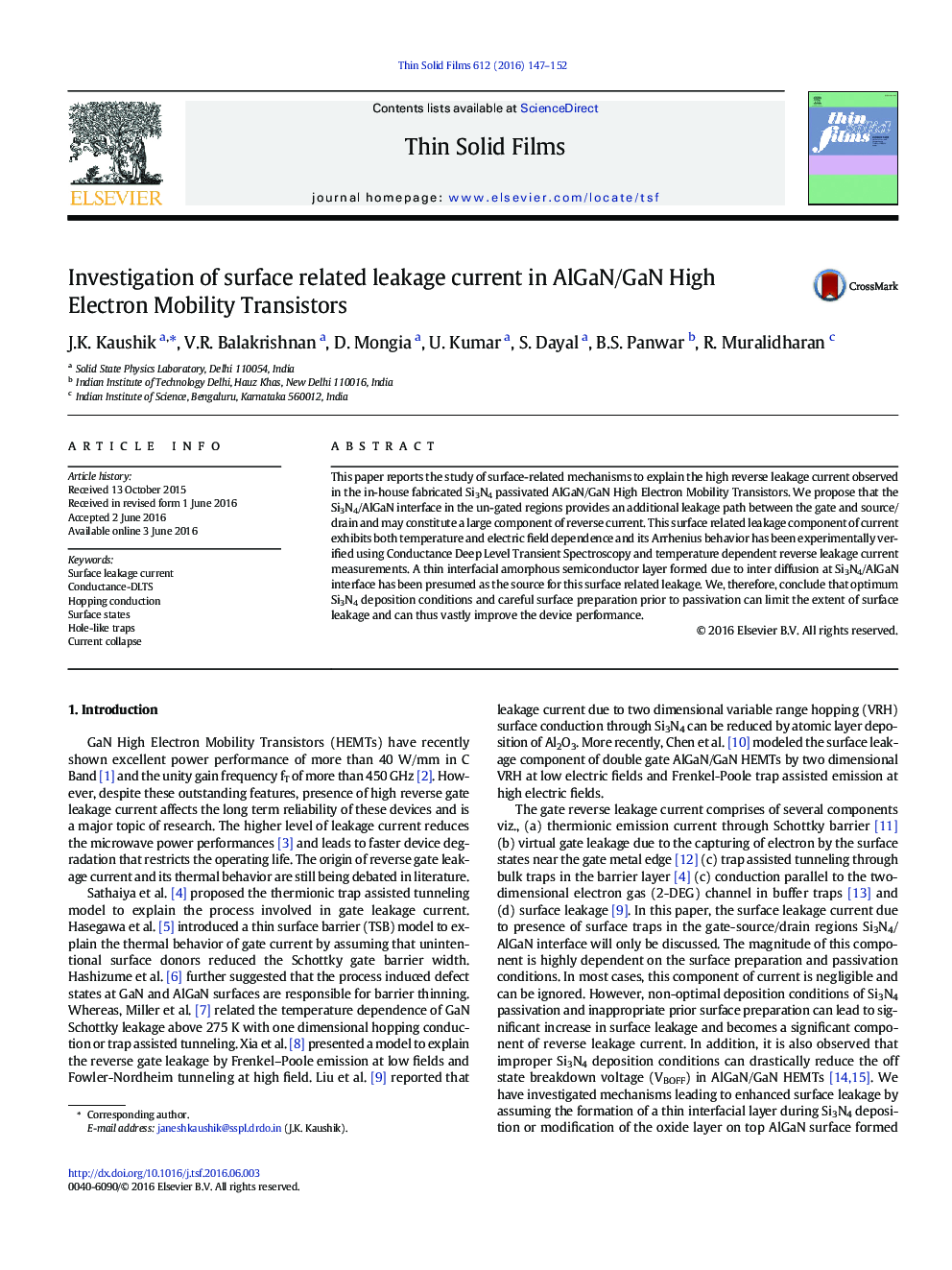| Article ID | Journal | Published Year | Pages | File Type |
|---|---|---|---|---|
| 1663930 | Thin Solid Films | 2016 | 6 Pages |
Abstract
This paper reports the study of surface-related mechanisms to explain the high reverse leakage current observed in the in-house fabricated Si3N4 passivated AlGaN/GaN High Electron Mobility Transistors. We propose that the Si3N4/AlGaN interface in the un-gated regions provides an additional leakage path between the gate and source/drain and may constitute a large component of reverse current. This surface related leakage component of current exhibits both temperature and electric field dependence and its Arrhenius behavior has been experimentally verified using Conductance Deep Level Transient Spectroscopy and temperature dependent reverse leakage current measurements. A thin interfacial amorphous semiconductor layer formed due to inter diffusion at Si3N4/AlGaN interface has been presumed as the source for this surface related leakage. We, therefore, conclude that optimum Si3N4 deposition conditions and careful surface preparation prior to passivation can limit the extent of surface leakage and can thus vastly improve the device performance.
Related Topics
Physical Sciences and Engineering
Materials Science
Nanotechnology
Authors
J.K. Kaushik, V.R. Balakrishnan, D. Mongia, U. Kumar, S. Dayal, B.S. Panwar, R. Muralidharan,
